-
October 4, 2012 Sabatini Building, Auditorium
Session 1. Politics, Publicity and Experimental Cinema
Une Nuit sur le Mont Chauve, Alexandre Alexeïeff & Claire Parker. 1933.
Komposition in Blau, Oskar Fischinger. 1935.
Papageno, Lotte Reiniger. 1935.
Muratti Greift Ein, Oskar Fischinger. 1934s.
Trade Tattoo, Len Lye. 1937.
Love on the Wing, Norman McLaren. 1939.
The Birth of the Robot, Len Lye. 1936.
Escape, Mary Ellen Bute & Ted Nemeth. 1937.
Musical Poster No. 1, Len Lye. 1940.
Hell Unlimited, Helen Biggar & Norman McLaren. 1936.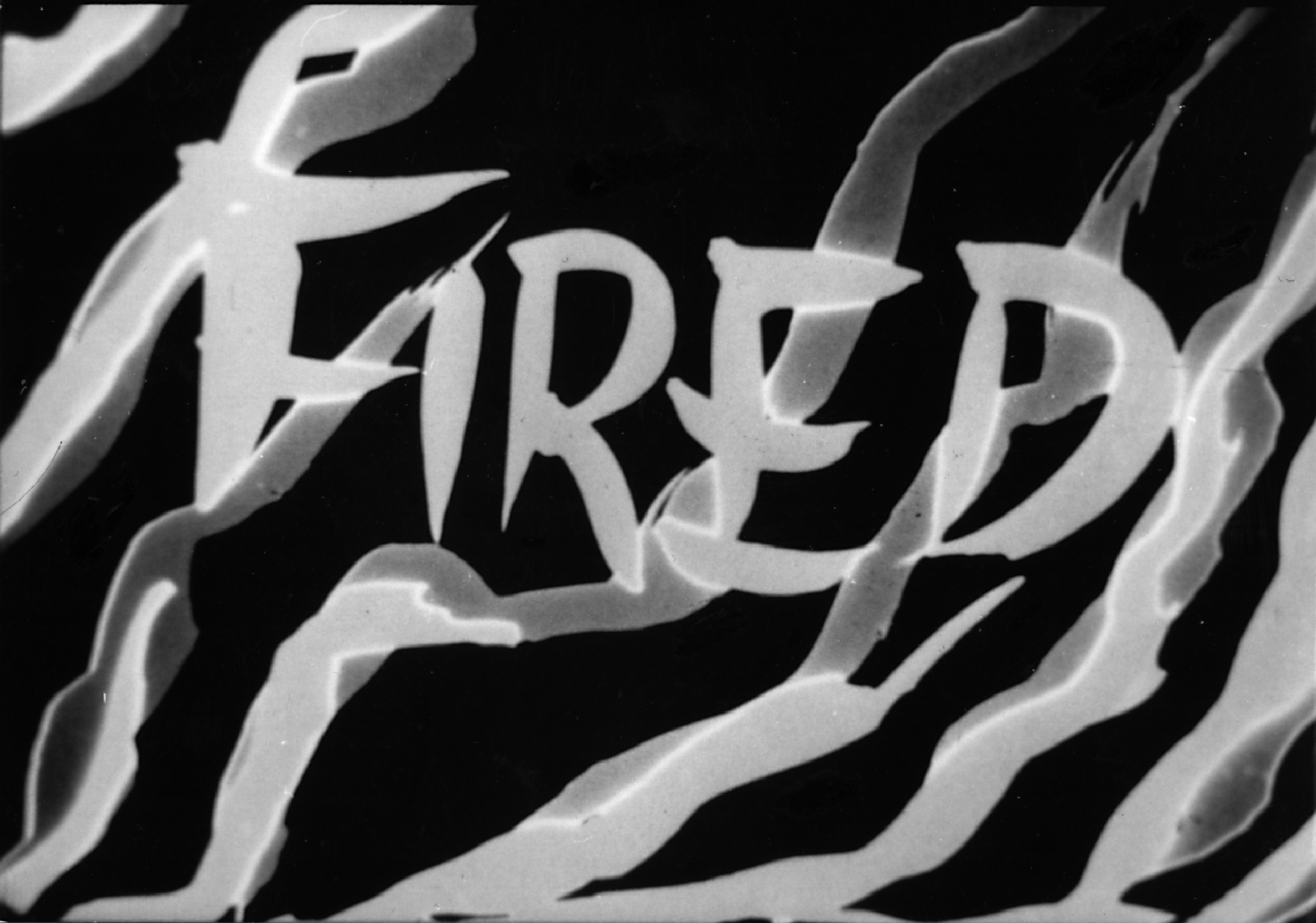
-
October 5, 2012 Sabatini Building, Auditorium
Session 2. The World of Tomorrow: Capitalism and Futurist Fantasies at the American Fairs
Buck Rogers in the 25th Century, Harlan Tarbell. 1934.
Scenes from the World of Tomorrow, Ford Motor Company. 1940.
Symphony in “F”, Ford Motor Company. 1940.
To New Horizons, General Motors Corporation. 1940.
Middleton Family at the New York World’s Fair. Robert R. Snody. 1939.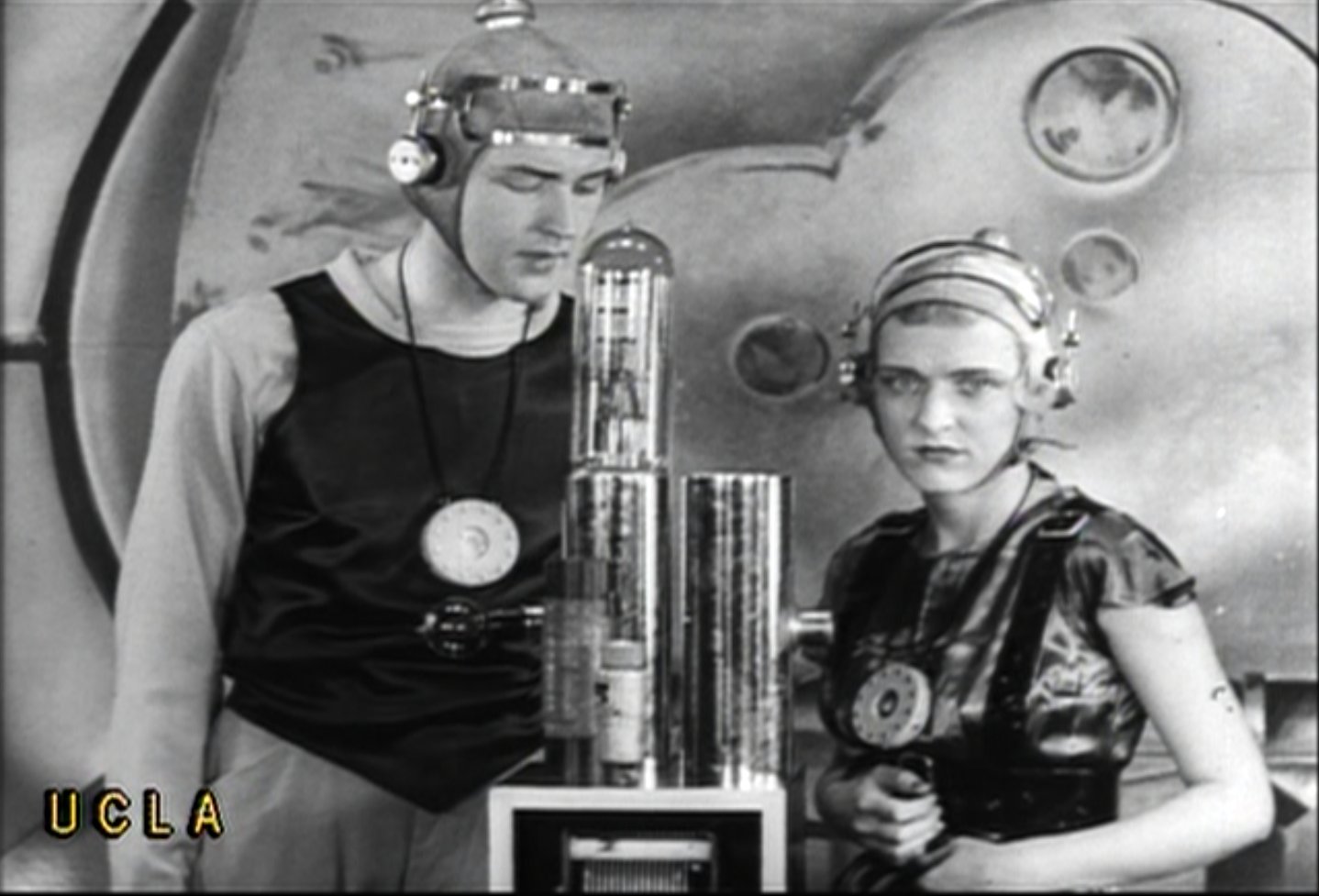
-
October 8, 2012 Sabatini Building, Auditorium
Session 3. Transfixed by Technology: Invention, Labor, and the New Man
Hands, Willard Van Dyke y Ralph Steiner. 1934.
Van Blikesemschicht Tot Televisie, Hans Richter. 1936.
Metall des Himmels, Walter Ruttmann. 1935.
Das Stahltier, Willy Otto Zielke. 1935.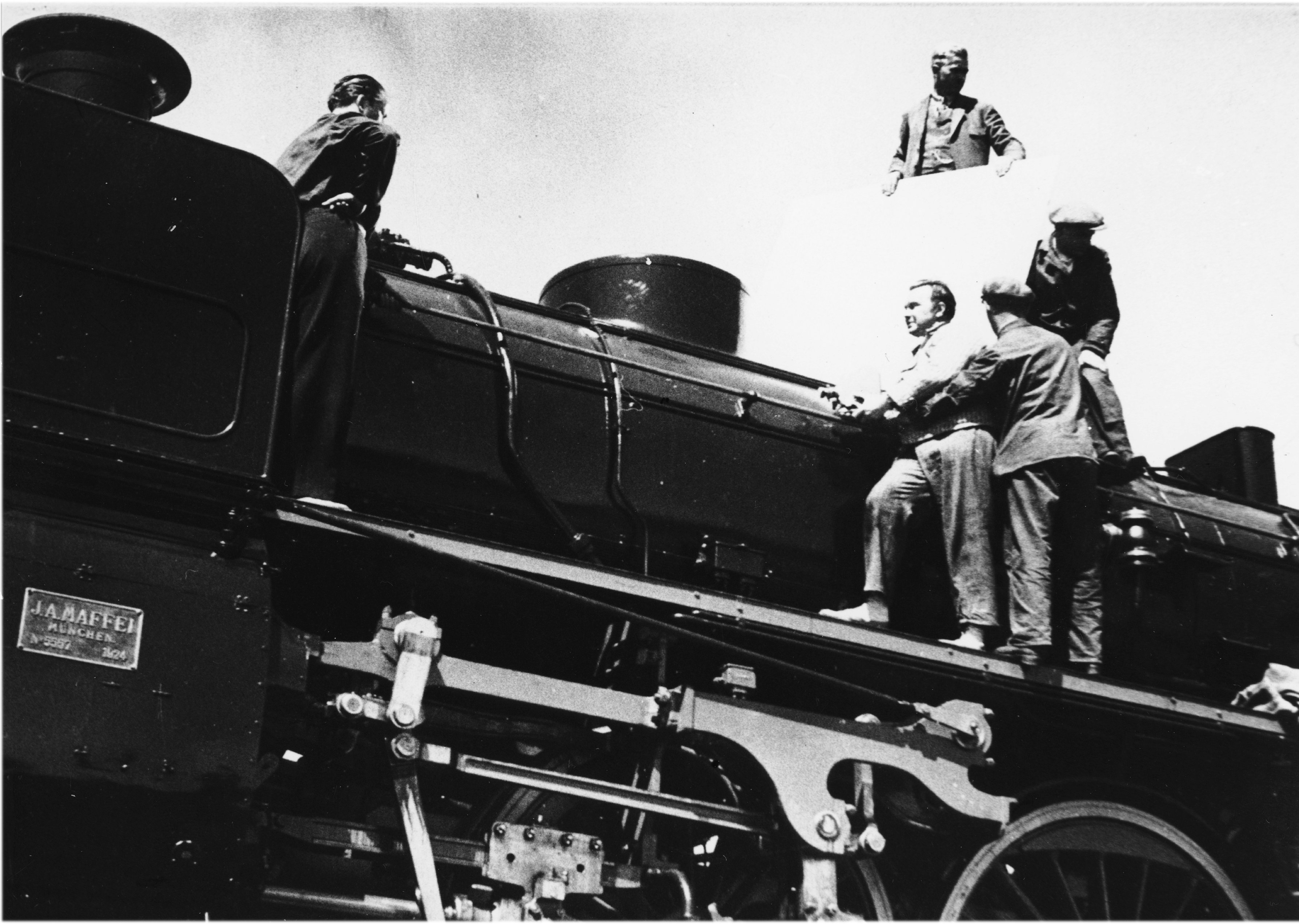
-
October 11, 2012 Edificio Sabatini, Auditorio
Session 4. Representing Spain: Documentary Films from the Pavillion at the 1937 Paris Exposition Internationale
Almadrabas, Carlos Velo & Fernando G. Mantilla. 1934.
La Ruta de Don Quijote, Ramón Biadiu. 1934.
Madrid, Manuel Villegas López. 1937.
España 36, Jean-Paul Dreyfus. 1937.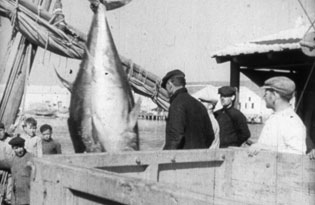
-
October 15, 2012 Sabatini Building, Auditorium
Session 5. The Spanish Civil War through the Eyes of Others
Noticiario UFA (12 de Mayo de 1937). 1937.
News of the Day, an MGM release, Hearst Newsreel Collection. 1937.
The Abraham Lincoln Brigade in Spain, Henri Cartier-Bresson & Herbert Kline. 1938.
Sierra de Teruel / Espoir, André Malraux. 1939.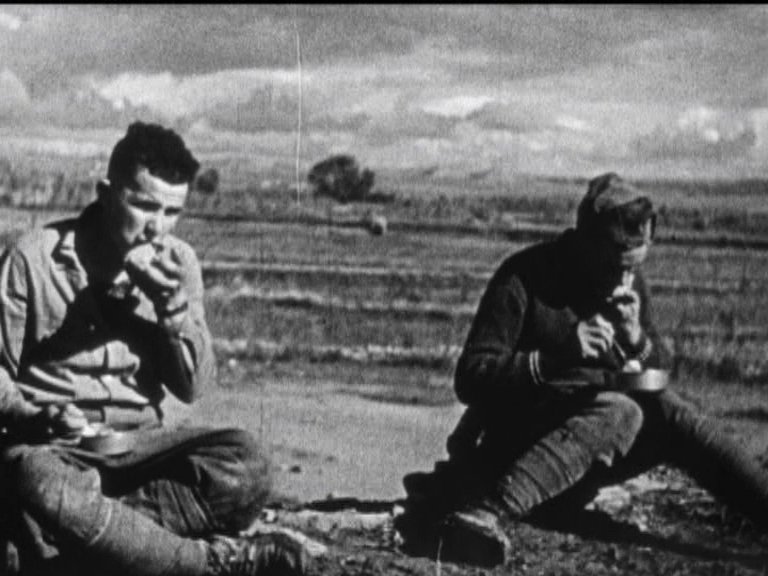
-
October 17, 2012 Sabatini Building, Auditorium
Session 6. Realist Poetics and Poetic Realism
Coal Face, Alberto Cavalcanti. 1935.
El muelle de las brumas [Le Quai des Brumes], Marcel Carné. 1938.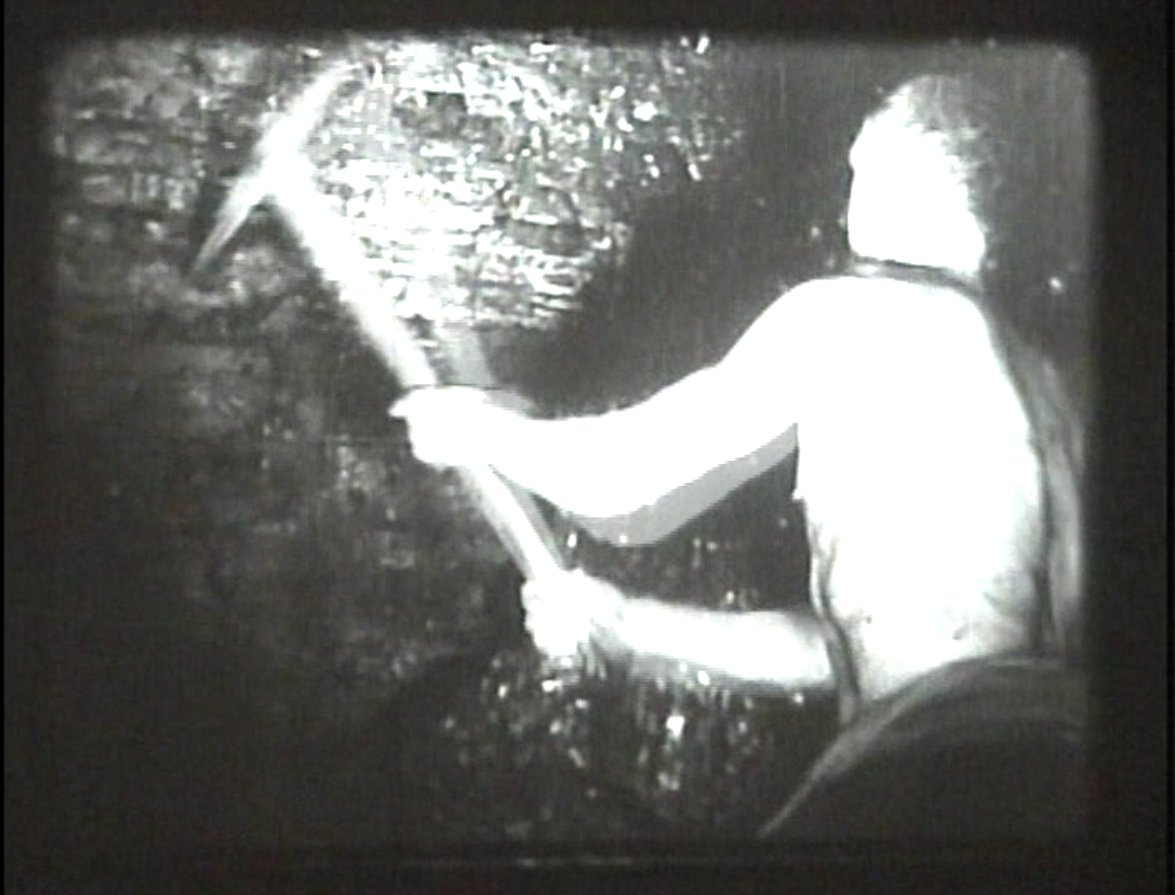
-
October 22, 2012 Sabatini Building, Auditorium
Session 7. Soviet Socialist Realism for the Spanish Republic
K sobytiiam v Ispanii 9, Roman Karmen & Boris Makaseev. 1936.
The Sailors of Kronstadt [My iz Kronshtadta], Efim Dzigan. 1936.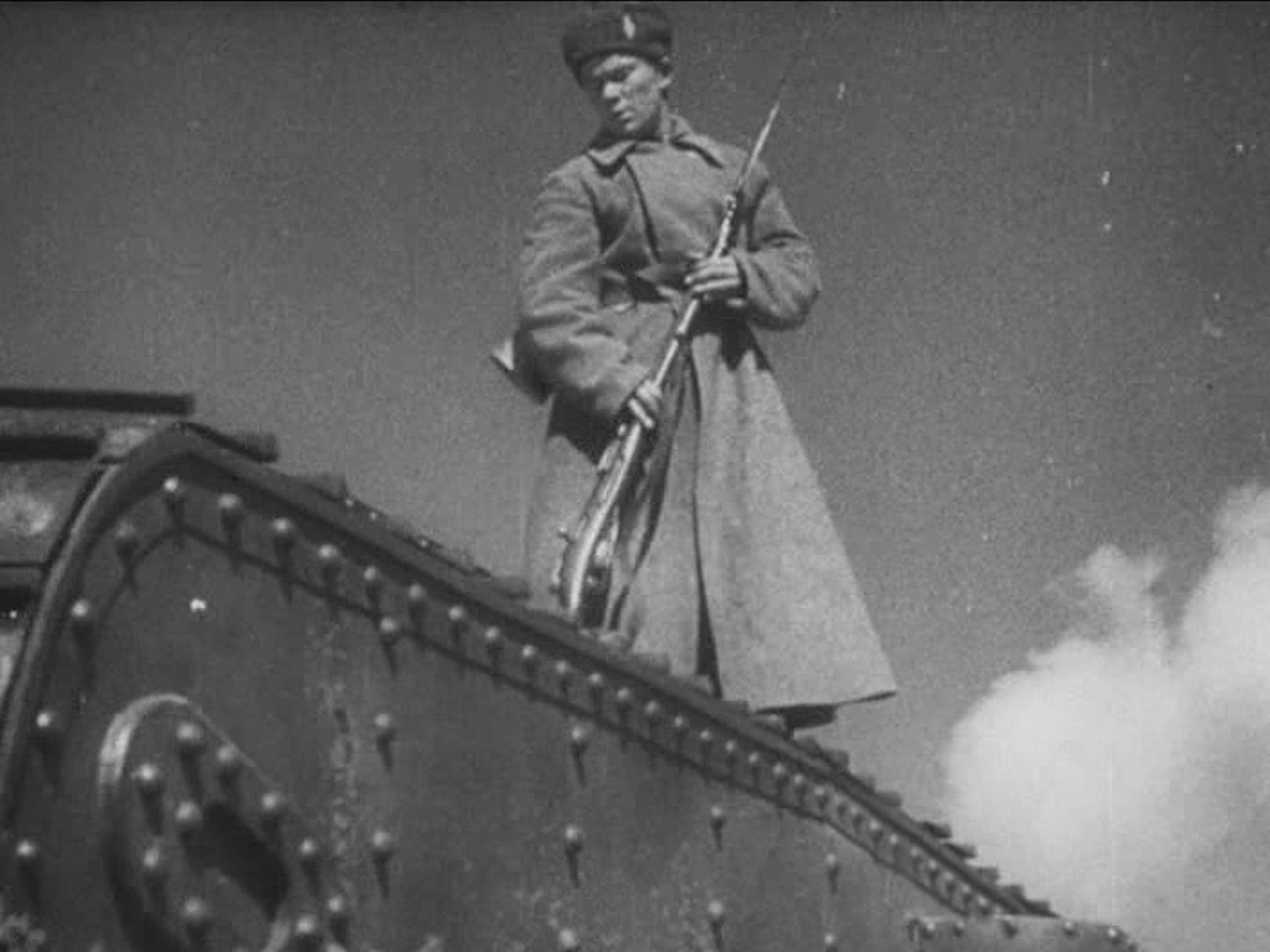
-
October 25, 2012 Edificio Sabatini, Auditorio
Session 8. Narratives of Colonialism in Documentary and Fiction
Song of Ceylon, Basil Wright. 1934.
Visitantes ilustres: Paul Robeson en Barcelona, Espanya al día Newsreel. Laya Films. 1937-38.
Sanders of the River, Zoltan Korda. 1935.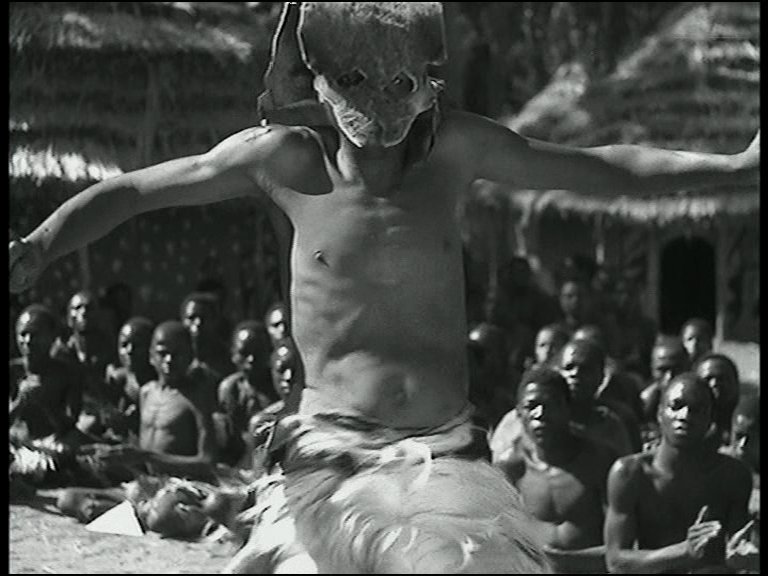
-
October 29, 2012 Sabatini Building, Auditorium
Session 9. Pre-Independence Cinema and the Independence of Women: The Indian Studio System of the 1930s
Kunku, Rajaram Vankudre Shantaram. 1937.
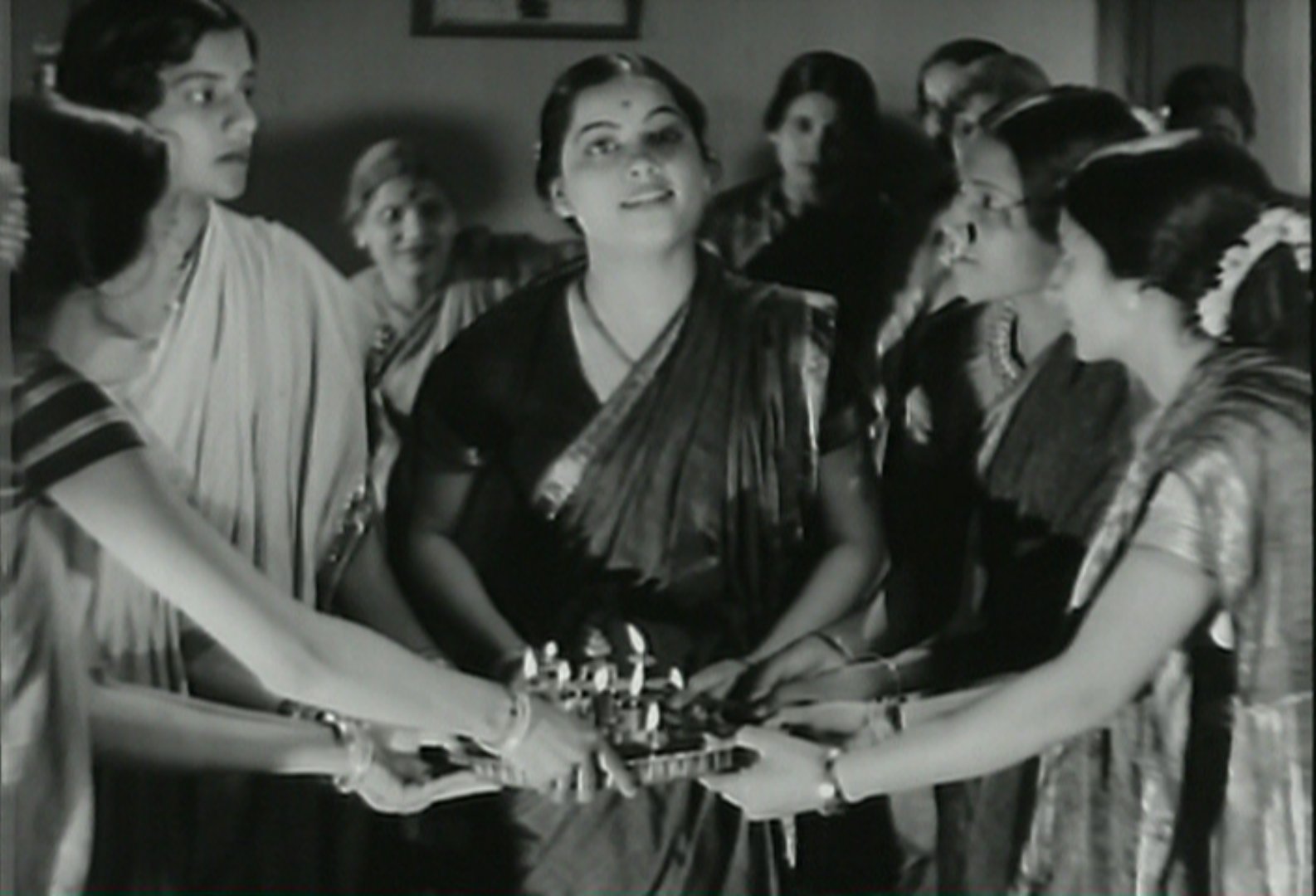
-
October 31, 2012 Sabatini Building, Auditorium
Session 10. The Cult of Distraction
Hollywood: City of Celluloid, Sten Nordenskiöld. ca.1932.
How stars are made at MGM Dramatic School. Hollywood, California, Hearst newsreels vault material. 1934.
Dada, Mary Ellen Bute. 1936.
The Gold Diggers of 1933, Mervin LeRoy. 1933.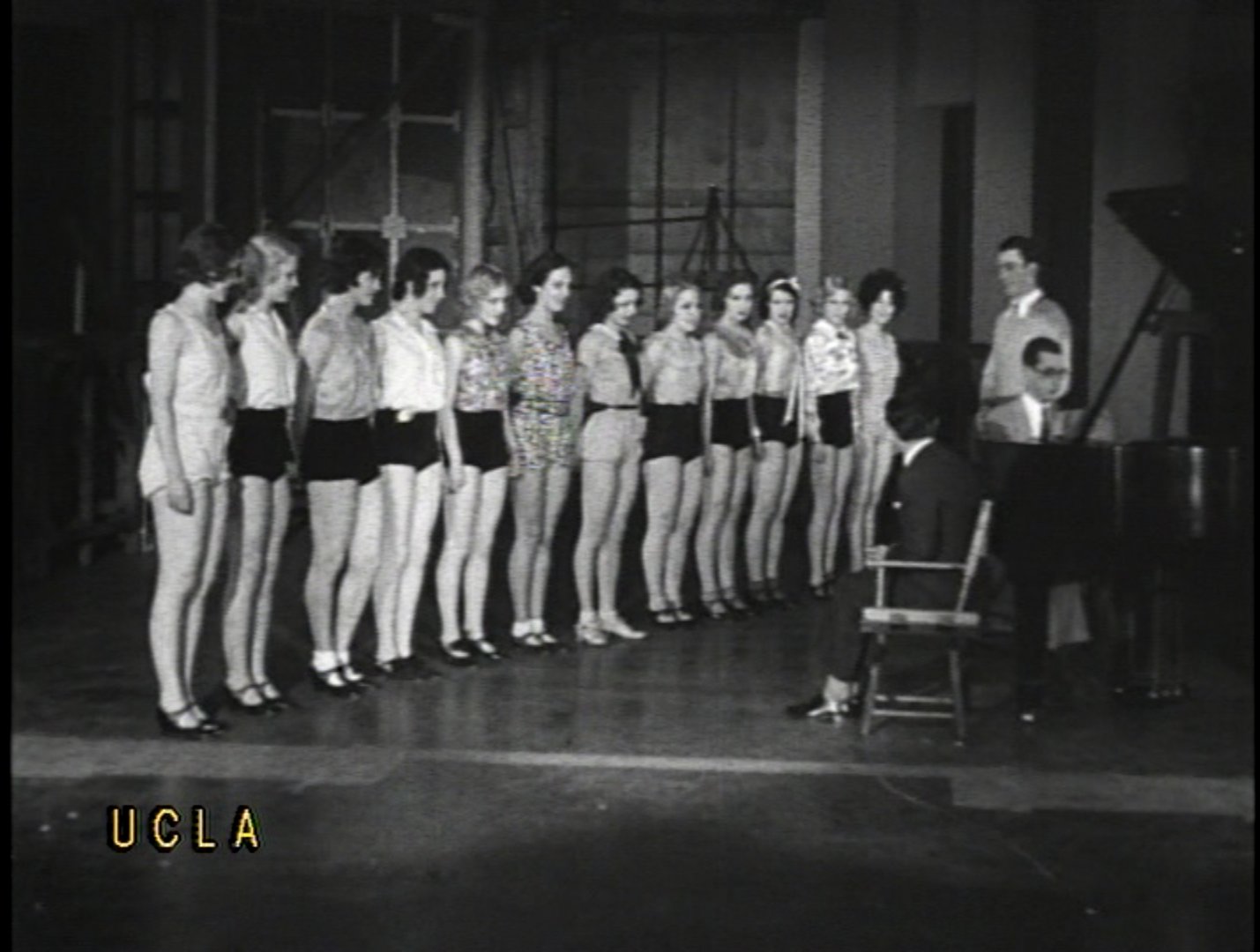
The cinema of the 1930s. Blue Flowers in a Catastrophic Landscape
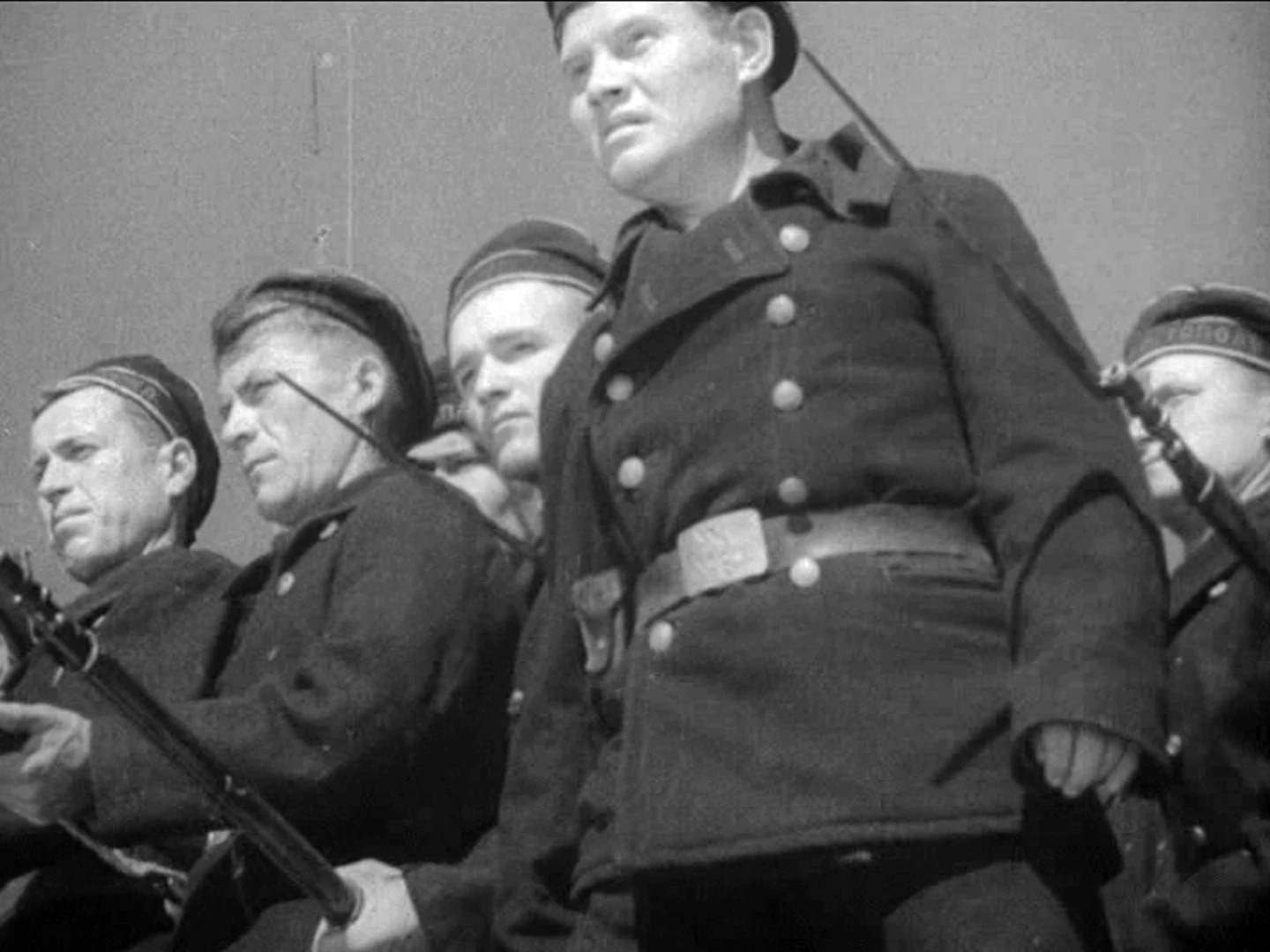
Held on 04 oct 2012
Yet Benjamin’s evocation of the blue flower also signals a utopian moment in his text, for he leaves open the possibility of cinema redeeming itself as an agent of revolutionary change, even as he and his contemporaries were witnessing the exploitation of mass media and spectacle by both fascist regimes and capitalist economies.
Making use of this metaphor between utopia and catastrophe, this film series explores the 1930s cinematic imaginary, acknowledging the relevance of the past for today and exploring its potential resonance in our current social, economic, and political circumstances. By intermingling documentary, newsreel, advertising, animation, industrial, mainstream and experimental film productions, the series also hopes to convey the diversity of the cinematic experience in 1930s film halls.
The themes of the series have been chosen to complement those highlighted in the current gallery exhibition, Encounters with the 1930s, though the individual film programs have also been organized in dialogue or in dialectical tension with one another. Among the resulting linkages are the visual pleasure of mass ornament in classic Hollywood spectacles and in fascist mass pageantry; the spiritual transcendence of technology in the heroic phantasmagorias of American industrial propaganda and in the reactionary modernism of fascist propaganda; the politics of race and gender in British colonial documentary and in pre-Independence Indian cinema; and depictions of the Spanish Civil War and Spanish regional and national identities from within and outside of Spain, from the vantage points of the fellow traveller and of the fascist aggressor.
As it does so, the series examines the different approaches taken during this period of audiovisual history, a broad panorama that witnessed the beginning of the political project of documentary filmmaking, but also the linking of the avant-garde to mass culture, the presentation of film as a capitalist utopia and the birth of the film industry as part of the cult of entertainment.
Curatorship
Karen Fiss
Más actividades
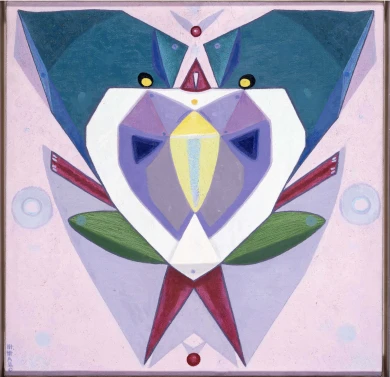
Estrella de Diego Lecture. Holding Your Brain While You Sleep
Wednesday, 3 December 2025 – 7pm
Framed inside the Museo Reina Sofía’s retrospective exhibition devoted to Maruja Mallo, this lecture delivered by Estrella de Diego draws attention to the impact of the artist’s return to Spain after her three-decade exile in Latin America.
Committed to values of progress and renewal in the Second Republic, Mallo was forced into exile to Argentina with the outbreak of the Civil War and would not go back to Spain to settle definitively until 1965 — a return that was, ultimately, a second exile.
Mallo saw out her prolific artistic trajectory with two impactful series: Moradores del vacío (Dwellers of the Void, 1968–1980) and Viajeros del éter (Ether Travelers, 1982), entering her most esoteric period in which she drew inspiration from her “levitational experiences” of crossing the Andes and sailing the Pacific. Her travels, both real and imaginary, became encounters with superhuman dimensions.
In parallel, her public persona gained traction as she became a popular figure and a key representative of the Generation of ‘27 — the other members of which also started returning to Spain.
This lecture is part of the Art and Exile series, which seeks to explore in greater depth one of the defining aspects of Maruja Mallo’s life and work: her experience of exile. An experience which for Mallo was twofold: the time she spent in the Americas and her complex return to Spain.
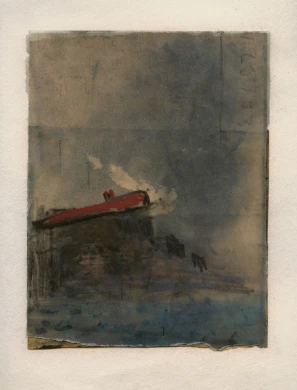
Juan Uslé. That Ship on the Mountain
Tuesday, 25 November 2025 – 7pm
Ángel Calvo Ulloa, curator of the exhibition Juan Uslé. That Ship on the Mountain, engages in conversation with artist Juan Uslé (Santander, 1954) in the Museo’s Auditorium 400 to explore in greater depth the exhibition discourse of this anthological show spanning four decades of Uslé’s artistic career.
The show casts light on the close relationship Uslé’s work bears to his life experiences, establishing connections between different stages and series which could ostensibly seem distant. Framed in this context, the conversation looks to explore the artist’s personal and professional journey: his memories, experiences of New York, his creative process, conception of painting, and ties with photography and film, and the cohesiveness and versatility that characterise his art. Key aspects for a more in-depth understanding of his artistic sphere.
The conversation, moreover, spotlights the preparatory research process that has given rise to this exhibition to grant a better understanding of the curatorial criteria and decisions that have guided its development.
These inaugural conversations, part of the main working strands of the Museo’s Public Programmes Area, aim to explore in greater depth the exhibition narratives of the shows organised by the Museo from the perspective of artists, curators and specialists.
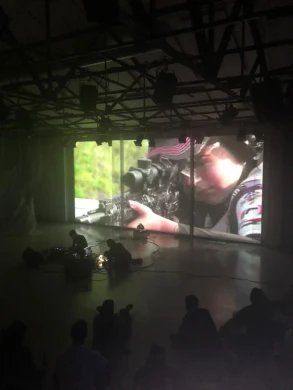
Fifteenth Edition of the Márgenes Festival
Sunday, 23 November 2025 - 7:30pm
This year’s opening night of the fifteenth edition of the Márgenes International Contemporary Film Festival will take place inside the Museo Reina Sof�ía. The inaugural session will witness artists Neutro Gris and Nodoaviom perform, live and for the first time, the multimedia performance Music 4 Salvation, which extends their language towards a sensorial experience fusing sound, image and digital emotion.
Music 4 Salvation unfolds as a sound and visual collage in which different strands are linked in one sole narrative of youth and adulthood, notions from which the piece puts forward a second reading of popular symbology and iconography and culminates by evoking the transitional time between these two stages of life. And all from a post-internet gaze and found footage aesthetics.
The Márgenes Festival is held from 23 to 30 November in Madrid and shines a light on innovative initiatives that combine up-and-coming and acclaimed talent. Its film programme explores the convergence of cinema, the visual arts and sound art with approaches that expand the limits of the film experience, encompassing screenings, audiovisual shows, performances, encounters and sessions for children. In addition to the opening event, the Museo also welcomes, among the organised activities this year, the series Emotional Interface. The Films of Metahaven.
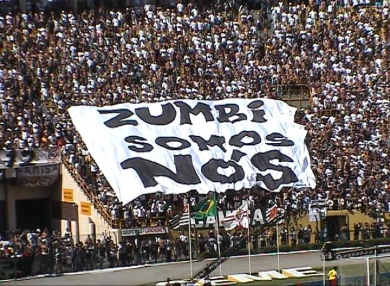
The History and Roots of Samba
Saturday, 22 November 2025 – 6pm
Museo Situado and the Maloka Brazilian Cultural Association come together to offer this artistic, historical and social activity in conjunction with Black Consciousness Day in Brazil, which pays homage to Dandara and Zumbi dos Palmares, universal symbols of Afro-Brazilian resistance and the fight against slavery.
In the activity, dance, poetry and performance become tools of memory and resistance via a programme which surveys the history of samba, from its origins in Bahia to its consolidation in Rio de Janeiro. It features the participation of more than ten Brazilian artists and pays homage to key figures in samba such as Tia Ciata, Clementina de Jesús, Cartola, Dona Ivone Lara, Elza Soares, Martinho da Vila and Alcione.
Further, the event seeks to shine a light on the richness of Afro-Brazilian culture while opening a space of reflection on resistance to racism throughout history and today, as well as inequality and disregard. In the words of philosopher Sueli Carneiro (2000), “the fight for the rights of black women and the community of African descent is inseparable from the rescue of history and the memory of our ancestors”. It is an artistic and vindicatory celebration that invites the whole community to aquilombarse: to come together, celebrate and affirm collective memory, for, as sociologist Florestan Fernandes (1976) affirmed, “the history of peoples of African descent can only be understood through the active resistance to oppression”. Long live Dandara. Long live Zumbi. Long live Afro-Brazilian ancestry.
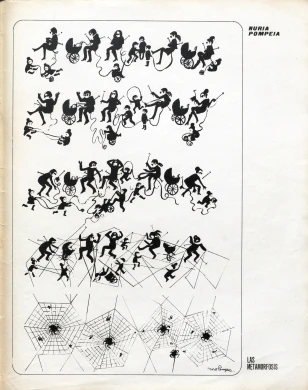
Crossed Vignettes
Friday, 21 November 2025 – Check programme
The Crossed Vignettes conference analyses the authorship of comics created by women from an intergenerational perspective and draws from the Museo Reina Sofía Collections. Across different round-table discussions, the programme features the participation of illustrators Marika, Carla Berrocal, Laura Pérez Vernetti and Bea Lema and researchers Viviane Alary, Virginie Giuliana and Elisa McCausland.
The aim of the encounter is twofold: to explore in greater depth the different forms in which women comic book artists have contributed to developing a counterculture; namely, the appearance of ruptures, reformulations and new genres within the ninth art. And to set up a dialogue which ignites an exploration of genealogies linking different generations of artists.
Moreover, the activity is put forward as a continuation to the exhibition Young Ladies the World Over, Unite! Women Adult Comic Book Writers (1967–1993) and the First International Conference on Feminist Comic Book Genealogies, held in April 2024 at the Complutense University of Madrid.
In redefining the visual narratives of the comic book and questioning gender stereotypes in a male-dominated world, women comic book writers and artists have impelled greater visibility and a more prominent role for women in this sphere. The study of intergenerational dialogue between female artists past and present enables an analysis of the way in which these voices reinterpret and carry the legacy of their predecessors, contributing new perspectives, forms of artistic expression and a gender-based hybridisation which enhances the world of comics.
The conference, organised jointly by the Museo Reina Sofía and Université Clermont Auvergne/CELIS (UR4280), features the participation of the Casa de Velázquez and is framed inside the context of the CALC programme The Spanish Artistic Canon. Between Critical Literature and Popular Culture: Propaganda, Debates, Advertising (1959–1992), co-directed by Virginie Giuliana. It is also the outcome of the projects Horizon Europa COST Actions iCOn-MICs (Comics and Graphic Novels from the Iberian Cultural Area, CA19119) and COS-MICs (Comics and Sciences, CA24160).
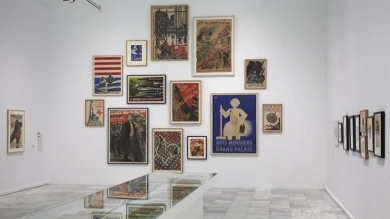
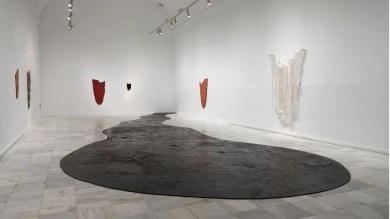
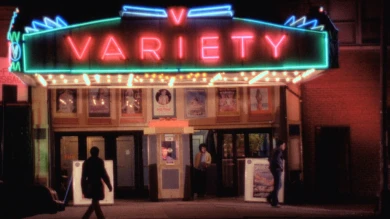
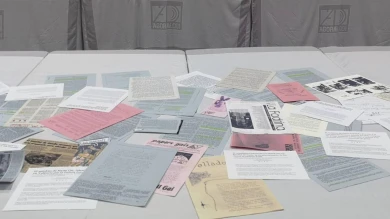
![Miguel Brieva, ilustración de la novela infantil Manuela y los Cakirukos (Reservoir Books, 2022) [izquierda] y Cibeles no conduzcas, 2023 [derecha]. Cortesía del artista](https://recursos.museoreinasofia.es/styles/small_landscape/public/Actividades/ecologias_del_deseo_utopico.jpg.webp)
![Ángel Alonso, Charbon [Carbón], 1964. Museo Reina Sofía](https://recursos.museoreinasofia.es/styles/small_landscape/public/Actividades/perspectivas_ecoambientales.jpg.webp)